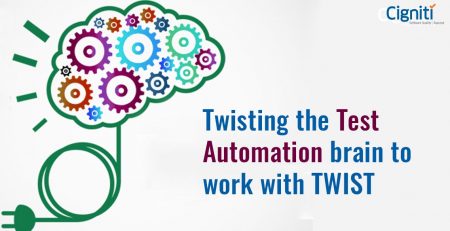What You Need To Know about Test Automation
The Test Automation Approach
Test automation implementation is tricky, yet if done right, can be highly rewarding for the organization. It makes most sense for businesses to automate the functionality that is most used and most critical. Equally important automation factors to consider are the areas of specified service levels of agreement, followed by repetitive procedures and tasks prone to error.
[Tweet “Simple can be harder than complex. You have to work hard to get your thinking clean to make it simple. –Steve Jobs #Quote”]
Test Automation Tips
- The Broadly Used Test Automation Tools: Automated testing refers to either scripting or recording a test such that there is no necessity for manual intervention. BDD and automation wrappers are widely used test automation tools. BDD, or readable acceptance testing fixtures let you write the scripts, while automation wrappers would enable easier automation.
- A Deterministic System Output is Productive: System tests are automated tests of larger, high-level functionality. System tests feed clean input (such as databases, user input, etc.) for end-to-end testing, validating the output against pre-defined results. It is vital that the system output is deterministic, and depends mainly on the input. Each time there are changes within the system, the system test cases also change.
- It Is Akin to Software Development: A test automation effort is equivalent to the standard software development project. Right from defining what ought to be automated, to designing the test automation and coding in the intricate details, the entire process requires attention-to-detail and constant maintenance of code.
- SDETs Play an Important Role: The right set of skills is crucial for effective test automation. There is a requirement for software development engineers in test (SDET) that can lead test automation processes with their best efforts. Good testers are still necessary to identify and write test cases for what needs to be tested. A test automator, on the other hand, takes these test cases and writes code to automate the process of executing those tests.
- The Initial Costs Are High: Test automation is an investment, and there is a high requirement for time and resources in the initial stages, in order for the organization to be able to reap benefits at later stages. This essentially implies that there usually is not a positive pay-off while automating the current release of the application. Rather, it is more beneficial to run automated tests every subsequent release. Therefore, it becomes very important to ensure that the scripts can be easily maintained.
- When it is Best to Automate:
- It is best to automate the testing process when there is a lot of regression work. When there is a necessity to ensure that new bug fixes and releases have not introduced new bugs, it is important to test the previous/existing functionality as well. In such a scenario, manual testing is not effective, in terms of company cost, resources, time, etc. it is hence best to opt for automation, under such circumstances.
- It is recommended to manually test individual pieces of code to verify that it is working as per code requirements. Acceptance test cases and automated scenarios can be incorporated as per the unit testing process.
- It is a good practice to automate testing when the GUI is nearly frozen in place, but there remain frequent functional changes. Testing the application where the code is changing frequently is best done via automation of the test code.
The Advantages of an Open-Source Test Automation Framework
- Economical: An open-source test automation framework is more reasonably priced in comparison to standard testing tools. The licensing costs are significantly lower and demand minimal hardware requirements. In addition, the testing components are easy to re-use and their high degree of scalability ensures that they can easily manage performance and load testing. Organizations can also leverage the flexible pricing plans that enable testers to adjust their total cloud storage according to their specific testing needs.
- Tailor-made: Owing to the open-sourced nature of the software, it can be altered relatively smoothly, to suit a testing department’s specific requirements. This conveniently editable code allows for smoother functionality, which, in the case of closed proprietary software packages, becomes more problematic, and occasionally possibly even damaging.
- More collaborative: Online communities thrive in open-source automation frameworks, as it enables testers to overcome obstacles by consulting the vast fields of information available on the web. Teams that operate from different locations can also work together through the centralized server, without the need to make several downloads and uploads in the constant flow of information transfer.
- Swifter testing: Test cycles with open-source tools tend to be shorter, rather than with traditional tools. Setup and tool deployment are also pretty swift, and there is no need for a mind-numbing installation process. Updates happen in real-time without affecting productivity, and the overall time-to-market is reduced. This gives organizations a significant push ahead in the boundless app delivery race.
- Virtualization: Virtualization empowers organizations to utilize their resources in the best manner, and ensures that testing is ultimately more effective and comprehensible. Virtualization also allows the easy sharing of resources with an associated dip in costs, thereby hugely benefiting the organization.
[Tweet “Test Automation Services Can Help Banks Reduce Time for Migration by a Whopping 75%”]
At Cigniti Technologies, we successfully implemented test automaton framework for a leading banking institution, reducing the testing process by a whopping 75%.
QA Script Migration from WinRunner to QTP at times proves fairly challenging. Following are some of the key business challenges the bank was facing:
- The automation framework was a combination of a function-driven and data-driven framework, which added to the challenges of migration.
- Citrix-based test setup added an additional layer of complexity and there was a heavy usage of runtime objects and also a hierarchy manipulation.
- WinRunner code consisted of a set of complex test scenarios for handling 3 types of applications: Web, Java SWING, and a Windows client application, all of which required careful handling.
Leveraging its proprietary IP for migration of QA scripts, WinQuick, the following were the solutions provided by Cigniti’s team of experts:
- Performed proof of concept using WinQuick to ensure migration readiness
- Supported migration of LoadRunner transactions and other GUI user Commands
- Extended existing COM-based mercury virtual table server application to work with QTP
Overall, as part of the key benefits, Cigniti’s team worked in a harmonious manner with the Client’s teams, reducing the time required to migrate by up to 75% and institutionalizing best practices into the new automation architecture.
In Conclusion
Cigniti’s test automation framework (CTAF) is a tool agnostic testing solution for validating complex business processes. It uses a keyword driven approach to help non-technical users validate business processes. CTAF has delivered 30% improvement in productivity and 40% reduction in test maintenance efforts in numerous test automation engagements. CTAF also seamlessly integrates with all the leading commercial and open source test tools and has delivered regression suites that run into thousands of test automation scripts that were executed overnight in an unattended fashion.
To enquire further about your test automation needs, contact our experts.





Leave a Reply